Deep in a forest two hours’ drive west of Helsinki is the deserted Paimio Sanatorium (Paimion Parantola in Finnish). One of the world’s best-preserved buildings from the modernist era, it’s as clean, sleek and mysterious as a medical instrument.
An overnight stay in a remote, disused hospital may not sound enticing. But for architecture and design enthusiasts, some opportunities are impossible to resist – and this one is time-limited. At least part of this building is likely to be converted into a hotel and spa in the coming years. The Alvar Aalto Foundation, which preserves the legacy of Finland’s most celebrated architect, took over the site three years ago from state ownership, and is searching for a way to pay for its upkeep.
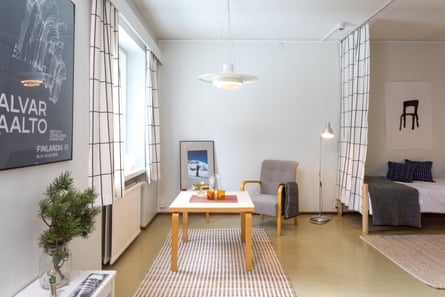
In the meantime, the foundation wants to share Paimio’s beautifully spartan state with visitors, and raise funds in the process. This year it opened Mäntylä, a block of former nurses’ apartments, as self-catering holiday lets. There is no spa, no pool and few luxuries. But anyone in search of untouched art deco splendour and restful escape will find them here.
Its massive, brilliant-white form is a spectacular sight against Nordic skies
We arrive at night, turning off the motorway from Helsinki to Turku for the small town of Paimio. Three kilometres beyond, at the end of a track, the sanatorium emerges from its forest setting like an ocean liner ablaze. Its massive, brilliant-white form is all towering edifices and moderne curves – a spectacular sight against deep-black Nordic skies.
Above the entrance is a concrete canopy, vaguely in the shape of a lung. Inside, Paimio’s decor is true to the 1933 original designs and a delirious dream: a vast, silent lobby area, chilly white with canary yellow floor, and a receptionists’ booth shielded behind glass, something like an enormous conical flask.
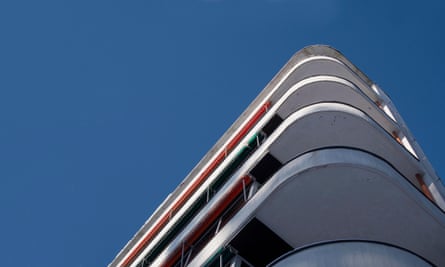
Mäntylä is a separate block. My room is functional, almost monastic, but it is also immaculate, uncluttered and utterly silent. The woodwork looks original. Thankfully, the plumbing is modern, and the Aalto-designed high-modernist furniture and textiles are contemporary reproductions.
Today Paimio is disused (though not quite abandoned). Finland, one of the world’s most equitable countries, is seeking Unesco world heritage status for 13 Aalto-designed modernist landmarks designed to improve society. They include housing, government offices, a university, Helsinki’s Finlandia concert hall and, of course, Paimio, which Aalto considered his early-career masterpiece when he completed it.
This place was commissioned in urgent circumstances, part of the Finnish state’s efforts at the end of the 1920s to deal with tuberculosis, the biggest public health crisis of the era. About 10,000 Finns were dying every year, more lives than a young country could afford.
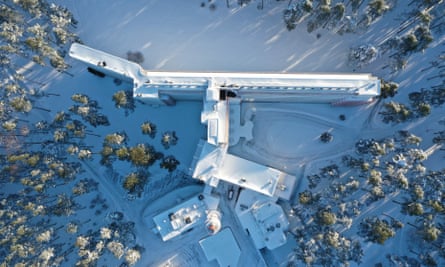
Before the advent of antibiotics, the standard treatments for TB were rest, sunlight, strict hygiene and fresh air. Sanatoriums sprang up across Europe – far enough from populations to contain infections. It was thought the cool air would kill bacteria and technological efficiency would maximise chances of recovery. Finland built eight large facilities – Paimio was the most advanced, and the last. Within a decade, the discovery of antibiotics would turn Paimio into a white elephant. It was later converted into a general hospital, but its remoteness was a perpetual problem, and it closed in the mid-2010s.
I contemplate the view from my apartment window, a hard-blue sky, brilliant sunshine and endless pine trees
Modernists believed proximity to nature was essential to healing. But the natural world was also to be feared and contained – wild, magisterial vistas were kept at bay, framed within reassuringly precise angles of human-made window frames.

The Magic Mountain, Thomas Mann’s 1924 novel, is partly a reflection on rarefied life inside a sanatorium, and the modernist dream of conquering disease with human ingenuity. I think about Castorp, Mann’s protagonist, as I contemplate the view from my apartment window the following morning, a hard-blue sky, brilliant sunshine and endless pine trees. Castorp arrives at a Swiss sanatorium as a visitor, but ends up seduced by care and rest and gradually becomes a patient. I decide it is time for me to explore.
The foundation offers a guided tour led by an architectural historian, who explains how 31-year-old Aalto won the architectural competition in 1929 with a plan that followed closely the tenets of the new ideals of functionalism. At Paimio, practicality would be inseparable from architecture. Aalto and Aino, his architect partner and wife who designed the interiors, paid close, near-obsessive attention to details. Everything was constructed for recuperation, from how daylight fell on wards to the efficiency of heating systems, noiseless sinks, hygienic light fittings and flexible furniture. All were instruments of healing.
Dust was the enemy of recovery. That canary yellow floor meant no dark corners. Every window ledge, skirting and shelf was rounded for efficient cleaning. Every lampshade, even the joints on metal bannisters, were fitted with protective dust shields.
Some patient rooms have been kept as they were left, including one from the 1930s. We admire a hospital gown for female patients – a chic, wraparound number in shell-pink silk. It is accessorised with a metal spittoon flask on a string, handy for coughing up phlegm. The flasks, we are assured, were sterilised every night.
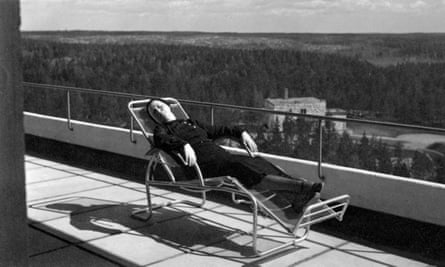
Paimio’s lift, says our guide, was one of the first in the Nordic region. Aalto wanted its mechanisms to be visible behind glass to give patients a sense of optimism, and faith in a technological future. The highlight is Aalto’s rooftop sun terrace – a sweeping concrete platform above the pinetops, where patients were wrapped in lambskin sleeping bags and would lie for hours every day on sunbeds.
For now, Paimio’s short-let apartments are low cost, starting at €90 a night
Mirkku Kullberg, the foundation’s chair, tells me Paimio’s conversion to a hotel could start next year. It needs upgraded energy and electrical systems, and urgent revenue. “We need to find a balance between saving it in a form that justifies Unesco heritage status but also makes it self-sufficient,” she says.
“It should be something close to the original use. It cannot be a hospital, so a hotel would be the best way of securing that: a place to rest and stay with conceptual interest.”
For now, Paimio’s short-let apartments are low cost, starting at €90 a night. There is a little time to explore before we leave. The forest seems endless, so after the tour we set off on a signposted walk. Very quickly, the path becomes eerie and oddly silent.
Through the trees, we see the flutter of the sanatorium’s orange, red and green awnings lowered against the brilliant sun. They give Paimio the look of a holiday camp. We find ourselves turning back towards its quiet comfort. We have been seduced.
Source: The Guardian


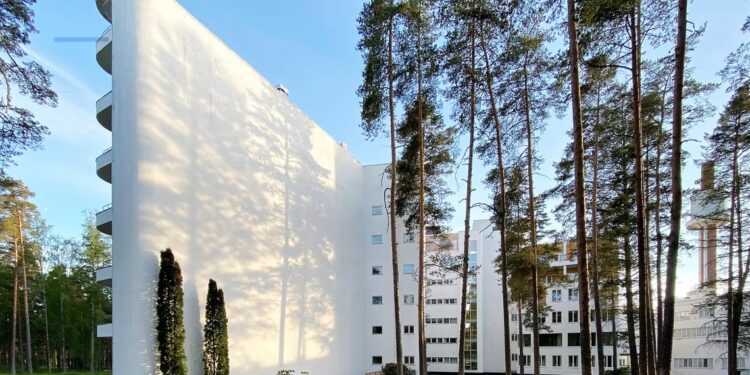
Recent Comments